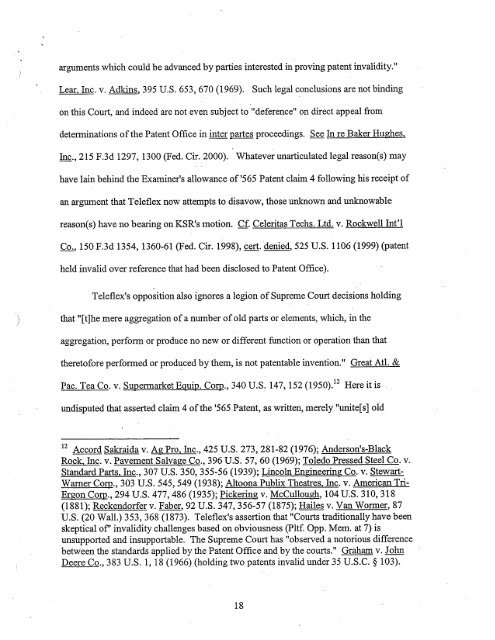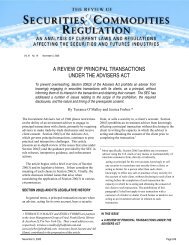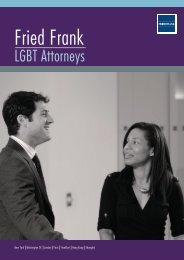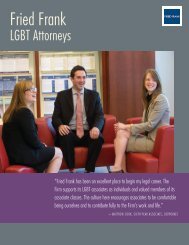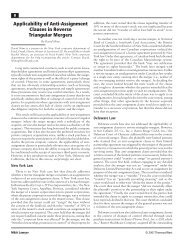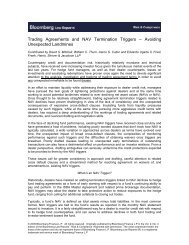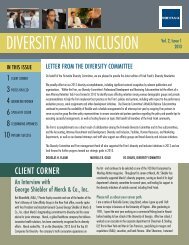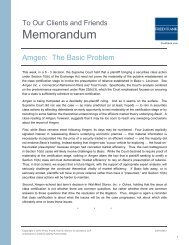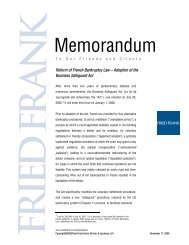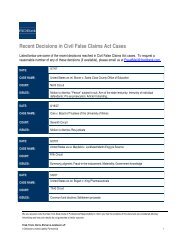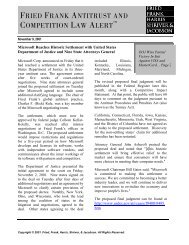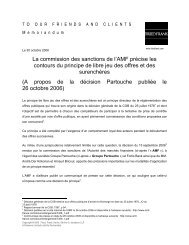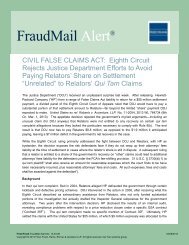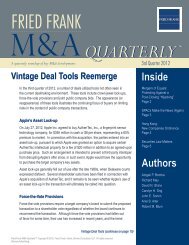Reply Brief in Support of KSR's Motion for Summary ... - Fried Frank
Reply Brief in Support of KSR's Motion for Summary ... - Fried Frank
Reply Brief in Support of KSR's Motion for Summary ... - Fried Frank
You also want an ePaper? Increase the reach of your titles
YUMPU automatically turns print PDFs into web optimized ePapers that Google loves.
arguents which could be advanced by parties <strong>in</strong>terested <strong>in</strong> prov<strong>in</strong>g patent <strong>in</strong>validity. IILear, Inc. v. Adk<strong>in</strong>s, 395 U.S. 653, 670 (1969). Such legal conclusions are not b<strong>in</strong>d<strong>in</strong>gon this Court, and <strong>in</strong>deed are not even subject to "deference" on direct appeal fromdetermnations <strong>of</strong>the Patent Office <strong>in</strong> <strong>in</strong>ter pares proceed<strong>in</strong>gs. See In re Baker Hughes,Inc., 215 F.3d 1297, 1300 (Fed. Cir. 2000). Whateverunariculated legal reason(s) mayhave la<strong>in</strong> beh<strong>in</strong>d the Exam<strong>in</strong>er's allowance <strong>of</strong>'565 Patent claim 4 followig his receipt <strong>of</strong>an arguent that Teleflex now attempts to disavow, those unown and unkowablereason(s) have no bearng on <strong>KSR's</strong> motion. Cf. Celeritas Techs. Ltd. v. Rockwell Int'lCo., 150 F.3d 1354, 1360-61 (Fed. Cir. 1998), cert.denied, 525 U.S. 1106 (1999) (patentheld <strong>in</strong>valid over reference that had been disclosed to Patent Office).Teleflex's opposition also ignores a legion <strong>of</strong>Supreme Cour decisions hold<strong>in</strong>gthat "(t)he mere aggregation <strong>of</strong> a number <strong>of</strong> old parts or elements, which, <strong>in</strong> theaggregation, per<strong>for</strong>m or produce no new or different fuction or operation than thattheret<strong>of</strong>ore per<strong>for</strong>med or produced by them, is not patentable <strong>in</strong>vention. II Great At!. &Pac. Tea Co. v. Supermarket Equip. Corp., 340 U.S. 147, 152 (1950).12 Here it is 'undisputed that asserted claim 4 <strong>of</strong>the '565 Patent, as wrtten, merely "unte(s) old12 Accord Sakaida v. Ag Pro. Inc., 425 U.S. 273, 281-82 (1976); Anderson's-BlackRock. Inc. v. Pavement Salvage Co., 396 U.S. 57, 60 (1969); Toledo Pressed Steel Co. v.Standard Pars, Inc., 307 U.S. 350, 355-56 (1939); L<strong>in</strong>coln Eng<strong>in</strong>eer<strong>in</strong>g Co. v. Stewar-Warer Corp., 303 U.S. 545,549 (1938); Altoona Publix Theatres, Inc. v. American Tri-Ergon Corp., 294 U.S. 477, 486 (1935); Picker<strong>in</strong>g v. McCullou~, 104 U.S. 310,318(1881); Reckendorferv. Faber, 92 U.S. 347,356-57 (1875); Hailes v. Van Wormer, 87U.S. (20 WalL.) 353,368 (1873). Teleflex's assertion that "COurS traditionallyhave beenskeptical <strong>of</strong>' <strong>in</strong>validity challenges based on obviousness (pltf. Opp. Mem. at 7) isunsupported and <strong>in</strong>supportable. The Supreme Court has "observed a notorious differencebetween the standards applied by the Patent Offce and by the courts." Graham v. JohnDeere Co., 383 U.S. 1, 18 (1966) (hold<strong>in</strong>g two patents <strong>in</strong>valid under 35 U.S.C. § 103).18


